 |
Vol IX No. 1 Spring |
|||||||||||||||||||||||||||||||||
|
Spring is always a time for renewal. This season is a great time to reflect on the accomplishments and struggles of this school year and look forward to the planning and freshness of the upcoming year. I believe teaching is a unique profession because teachers get the chance to reboot every Fall. As teachers, we have the opportunity to try again and continually improve ourselves and our instruction. We thought that Spring was in the air, but I woke up to snow on the ground this morning in North Georgia. This school year has already turned the corner, and we are heading for the home stretch, with one major hurdle - Georgia Milestones - still on the horizon. While teachers and students prepare for end of the year testing, GCTM is also busy preparing for Summer Academies and the Georgia Math Conference at Rock Eagle in October. Registration is now open for the 2017 Summer Math Academies, which are headed to four locations across Georgia in June and July. Sessions offered during the institutes will include the following grade bands: Kindergarten – 1st grade, 2nd-3rd grade, 4th–5th grade, 6th–8th grade, Algebra, Geometry, and Algebra II/Pre-Calculus with the TI-84. The Academies will focus on Principles to Actions and participants will learn all about:
For more information about the Summer Math Academies, visit the GCTM website and click on the Academies tab or use the following link: https://new.gctm-resources.org/gctm/dv7/?q=academies. We are very excited about providing the opportunity for teachers to collaborate and learn together to make all of us better instructors for each of our students. Preparations for the 2017 GCTM Georgia Math Conference have been going on since October 2016. The dates for the conference are October 18 through 20 at Rock Eagle 4-H Center. We have our keynote speakers lined up and are finalizing the logo. The theme for the conference is “Communicating Mathematics: Creating a Culture for Discourse Fluency.” We are currently accepting speaker proposals for breakout sessions. Please consider presenting on what you are passionate about. You can find the speaker proposal form on the GCTM website (www.gctm.org) under the GMC at Rock Eagle tab. In other news, GCTM was recognized by the Georgia Senate on February 21, 2017 at the State Capitol in Atlanta. This was our annual “Math Day at the Capitol.” Five GCTM members were present on the Senate floor while the resolution was read by Senator Chuck Hufstetler, who sponsored the resolution. Nikita Patterson from Gordon State College, Denise Huddleston from Metro RESA, Joy Darley from Georgia Southern, and Brian Lack from Forsyth County accompanied me during the event. Several other GCTM members were seated in the gallery and offered their support. We had the privilege of having lunch and speaking with several members of the Finance Committee. I would like to express my appreciation to T. J. Kaplan and Denise Huddleston for their hard work in coordinating Math Day at the Capitol and setting up the opportunity for us to meet with the Senators to express our goals and concerns. I would also like to thank all of the members who took time from their busy schedules to represent GCTM. Finally, as Spring Break is upon us, I’d like to recommend the movie Hidden Figures as a “must-see” movie for all math educators and students. This inspirational movie emphasizes the importance of students understanding and being able to apply mathematics to problem-solving. Your opportunities are unlimited if you have a strong foundation in math. The movie also stresses the importance of equity among all learners by focusing attention on the contributions of these female mathematicians to The Space Race and other missions. “Hidden Figures” has been regarded as relevant to the cause of improving youth awareness in education and careers in the Science, Technology, Engineering, and Mathematics (STEM) field. It was designed to help encourage a new generation of women to consider STEM careers. Research indicates that by the year 2020, there will be 2.4-million unfilled STEM jobs. The challenge for Georgia’s math educators is to find ways to use the lessons learned from this historical event to springboard today’s classroom instruction and encourage our students to problem-solve and be inspired by mathematics. That being said, I hope each of you enjoy a fun, relaxing Spring Break and has a strong finish to this school year.
Rep. Beth Beskin, a member of the House Education Committee, visited Fickett Elementary School in the Atlanta Public School System on Thursday, Oct. 13. She visited a 2nd, 3rd, and 5th grade classroom accompanied by the math coach at the school, the district elementary math coordinator, TJ, and Denise. In each of the classrooms she engaged with students and asked them questions about what they were doing and was impressed with what the students were doing as well as how they could explain what they were doing. In the 3rd grade classroom she saw students working in different centers and observed how the students working in the small group with the teacher were making sense of problems, representing the problems with manipulatives, and determining the solution. State Board Member visit to GMC Brian Burdette, the State Board of Education member from the 10th congressional district, attended the Thursday evening session at the GMC and heard Jenny Bay-Williams. Prior to the meeting, several members had the opportunity to talk with him about the need for rigorous standards for students. Lunch with the Lieutenant Governor I was invited to have lunch with Lieutenant Casey Cagle. Jeremy Peacock, President of GSTA and I were the only educators in the room. Other agencies/interests represented were the Hotel Association, transportation, Piedmont Hospital, Medicare/Medicaid, vendor for rehabilitation facilities, DeVita Dialysis, energy (Southern Company, Oconee Energy) and a few others. Each shared their interest. I shared the continued support of the GSE, a rigorous curriculum appropriate for all students. Math Day at the Capitol The resolution was written and declared Monday, February 13 as Math Day at the Capitol. The Senate Finance Committee (15 members) were invited, and I asked if the Chairman of the Senate and House Education Committees could be invited as well. There were about five GCTM members who attended the luncheon and chat with the senators. Below is the Math Day is highlighted in Michael William’s Capitol update. “This past Wednesday, we had the privilege of recognizing the Georgia Council of Teachers of Mathematics for their work promoting mathematics education as part of Math Day at the Capitol. Math and all STEM education are vital because they influence every part of our lives.”
MICHAEL WILLIAMS
The 2017 GCTM Elections Are Upon Us!
Online voting instructions and unique ballot codes will be emailed* to members very soon (by April 15th). Online voting begins a day or two later, with the last day to vote being April 29th. In the meantime, become familiar with the candidates running for President, Vice President for Awards and Honors, Vice President for Advocacy, and Secretary by following the links below:
*Members with no email address listed in our database will be sent a paper ballot via US Mail
Well, Georgia mathematics teachers—spring break is upon us and another year is almost over. We know that students tend to check out on us after spring break. How can we keep them “checked in”? In this article, I will share three student engagement strategies that might help you make it to the end of the school year with some level of sanity! Even students who are good at sitting still, listening, and taking notes are antsy this time of year! They need movement and something interesting to figure out. My 13-year old son said that the problem with math is that the teachers always want to tell him how to solve problems, but he wants to figure out how to solve them himself. My 9-year old, who is very rigid, thinks that he’s only allowed to think about and do problems using the method his teachers have taught him. I know you have students like both of my boys. Working challenging problems that lend themselves to multiple strategies in small groups is a great way to engage students. The three strategies shared below assume this kind of task and structure.
Discourse is a hot topic right now in mathematics education. In fact, it’s the theme of this year’s Georgia Math Conference! Thinking about your own classroom on a typical day, who does most of the talking? Is it the teacher? Is it students? What kind of talking is going on? Is it an IRE (Initiation, response, evaluation) pattern of discourse (Moschkovich, 2007)? In this pattern, teachers initiate a question and one or more student(s) respond. Finally, the teacher evaluates the answer(s) as correct or incorrect . This discourse pattern can also be characterized as vertical discourse (teacher-student-teacher-student…). A more engaging pattern is horizontal discourse (Nathan & Knuth, 2003) in which there is student-to-student discourse. There are some “Talk Moves” (Kazemi & Hintz, 2014) that a teacher that can use to promote classroom discourse.
These Talk Moves can help you get students talking about mathematics. Some of them, such as wait time, are likely familiar, but you might try some of them that are not already part of your regular practice. Strategy 2: Technology
Like Desmos, Geogebra is free, and is available as a phone app as well. There are also many websites that provide exciting problems and activities for you to use. I really like engageny (engage New York) at https://www.engageny.org. They have resources for all grade levels.
Another great site is the Math Assessment Project at http://map.mathshell.org/lessons.ph. They have full investigations tied to standards for grades 6-12, with all of the student materials already created. Another nice trick is that our GSE standards have the similar codes as Common Core standards. For example, the GSE standard MGSE9-12.G.GMD.1 matches the Common Core Standard CCSS.MATH.CONTENT.HSG.GMD.A.1. If you find the Common Core standard code, you can search by code to find many online resources for any GSE Standard.
And if you don’t know about Dan Meyers’ 3-Act tasks, check him out at http://blog.mrmeyer.com/category/3acts/. My younger son (4th grade) loves to use the Hands-on-Equations app. He’s solving 2-step linear equations in 4th grade! Kids always amaze me with what they can do. Strategy 3: Open-ended questions Open-ended questions are a great way to engage students in a different kind of thinking other than what they are used to using. One of my favorite types of open-ended questions is asking a question backwards (kind of like Jeopardy—you give the answer and let students come up with the question). In 8th grade, students are studying systems of linear equations. My older son is in 8th grade, and I asked him to write me a system of linear equations that has a solution of (2,3). He struggled at first, but he figured it out. He was very proficient at using the methods, but this question stumped him a bit. You could give students a graph of a function with no numbers on the axes and ask them to write an equation that would produce such a graph, or a story that would fit the graph. In the early grades, you could ask them to write a story problem that would match an equation like 10 – 4 = 6. In geometry, you could ask students to come up with the dimensions of two different cylinders that have the same volume. These questions are often at a higher level of cognitive demand because the students don’t have a step-by-step procedure to solve them. Give them a try! We at GCTM wish you a wonderful and relaxing spring break—we know you deserve it! I hope you will find some of these ideas helpful as you prepare yourself for the home stretch. Thank you for all you do for children in mathematics classrooms across Georgia! References Kazemi, E. & Hintz, A. (2014). Intentional talk: How to structure and lead productive mathematical discussions. Portland, MA: Stenhouse. Moschkovich, J. (2007). Examining mathematical discourse practices. For the Learning of Mathematics, 27 (1), 24-30. Nathan, M. J. & Knuth, E. J. (2003). A study of whole classroom mathematical discourse and teacher change. Cognition and Instruction, 21 (2), 175-207. Wendy Sanchez is a mathematics teacher educator at Kennesaw State University. She teaches undergraduate and graduate content and methods courses for preservice and inservice mathematics teachers. Her research is related to mathematics methods courses for preservice teachers.
Becky: When did you start teaching mathematics? Diana: I started teaching math in 1970 in Knox County, Tennessee. I taught 7th and 8th grade math in an elementary school. In Tennessee at that time, it was K-8 and 9-12. I had six classes a day. Students were tracked. Twelve students were in my low-level classes and around 25 were in my on-level and advanced classes. I taught three years, took a three year break, and then taught another 33 years straight. I taught four years in three different private schools and the rest public [schools]. Becky: What resources did you find most helpful when you first started teaching?
Becky: When you went from one school to another, did you have a difficult time adapting to the new school culture or going from private to public? What challenges did you face?
Becky: What was your favorite subject to teach and why? Diana: My favorite class to teach was Analysis. Our department head at Pope, Cherlyn Sheperd, left and said, “Here it is, but there's a chapter zero that we teach also.” She and Debbie Poss had developed the curriculum, and it had set theory with rings and fields that I knew nothing about. It was an interesting summer, but I loved the class and learned a lot. I taught it for about 10 years and actually incorporated some of those topics in Accelerated Math 3. This class was all over the map and showed the real beauty of math. It also allowed me to stretch the kids. I gave them topics that were not in the curriculum and had them research and present them to the class.
Diana: The school may assign you a mentor. Use him or her. Also find an unofficial mentor that has your values and hopefully teaches what you teach. Collaborate, collaborate, collaborate!!! I loved being on the cutting edge of technology. Students learn much better visually (mostly anyway) and I loved the graphing calculators and the programs on computers that show the students what the algebra really means. I know we have had a lot of complaints about the "new math", but what I see coming through the elementary schools now is fantastic!! We are teaching the real meaning of the math and then showing them the algorithms. That's the way it should be done. If they see that with numbers I think they will have a better handle on algebra. Now I want to finish my other thought about mentors. Always find the most positive people around. There is nothing that will bring you down faster than a negative person. Unfortunately they are in every school. Use the internet. There are so many sites that can give a different approach that may help you present the topic better. But once again remember there are sites that aren't that good. Becky: I appreciate you taking your evening to answer some of these questions and sharing your insights on teaching mathematics. Thank you! Conclusion Who would you like us to interview for the next Teacher Talk? A coworker? An author of your favorite mathematical article? A special presenter from GMC? Email us with your request, and we will be happy to reach out to them. Be sure to sure to include any questions that you want us to ask during the next interview. Thank you for being part of Reflections.
The keynote speakers will include Sunil Singh, Chris Franklin, and Sue O’Donnell.
Would you like to be part of this wonderful conference? Consider using your expertise and present your own ideas in a session! For more information, please visit this GMC page located on GCMT’s website found at https://new.gctm-resources.org/gctm/dv7/?q=gmc.
Email questions to academies@gctm.org. Cost: $120 for non-member and $90 for member Registration Opened February 14th at Locations and Dates:
Don’t miss out on this wonderful opportunity. Sign up today!
Middle School Math Tournament
State Math Tournament
Full solutions, and sometimes multiple solutions, are provided along with a topic index so that students may find any problem by topic. (Note: All sale proceeds go directly to GCTM and fund the State Math Tournament and ARML team.)
Mini-Grants
Special Projects
Emerging Teacher-Leaders in Elementary School Mathematics Grants for
Grades PreK–5 Teachers
Teacher Professional Development Grants for Grades PreK–5 Teachers
Improving Students’ Understanding of Geometry Grants for Grades
PreK–8 Teachers
Summer Mathematics Study Grants for Grades 6-8
Teachers
Connecting Mathematics to Other Subject Areas Grants for Grades 9-12
Teachers
Grants and other Funding Opportunities compiled
by Texas Instruments
ING Unsung Heroes Grants
Advanced Technological Education (ATE)
The Toshiba American Foundation (TAF)
The next four issues of Reflections will focus on the following priority topics:
As Georgia’s leading platform for the exchange of ideas among mathematics educators, contributors vary in subject areas, levels of expertise, and target audiences. Additionally, we welcome first-time contributors, writing collaborators, mathematicians, new and preservice teachers, and retired teachers and professors. One of the perks for submitting an article is that your membership fee for GCTM will be waived for one year. How great is that? If you wish to discuss your ideas for a topic prior to submission, please contact Dr. Becky Gammill at gammillgctm@gmail.com. Guidelines for Submissions
Below I am sharing an important article of the history and swinging pendulum of the different foci of the approach to teaching mathematics since 1788 to today! Matt Larson, President of NCTM, shares this history and some advice for coping with changes and challenges in mathematics teaching and learning in most all educational settings and times. For more excellent articles and perspectives from the Matt Larson, check out the following website: http://www.nctm.org/News-and-Calendar/Messages-from-the-President/
Matt
Larson, NCTM President The Elusive Search for Balance
The authors of the report observe, “The Common Core math standards seek to bring a peaceful end to the ‘math wars’ of recent years by requiring equal attention to conceptual understanding, procedural fluency, and application (applying math to real-world problems). Yet striking that balance has not been easy. We see in these results several examples of teachers over- or underemphasizing one component to the detriment of another” (p. 6). I found this statement particularly striking. This over- or underemphasis may be less a function of independent teacher actions in the classroom than a result of teachers doing their best to interpret and implement what they find in their curricular materials, which, as the Fordham report indicates, are aligned (or not) with the Common Core State Standards to varying degrees. The over- or underemphasis of a particular component may also reflect teachers’ trying hard to comply with mandates at the district or school level. It is critical to appreciate that the over- or underemphasis phenomenon is not a new one. Mathematics teachers in the United States today are just the latest generation of U.S. educators to be caught in a 200 plus–year pendulum swing between an overemphasis of rote practice of isolated skills and procedures and an overemphasis of conceptual understanding, with their respective overreliance on either teacher-directed or student-centered instruction. It all began in 1788 (the same year that the U.S. Constitution was ratified), when Nicolas Pike published the first major U.S. mathematics textbook, entitled Arithmetic. The process that Pike recommended for teachers was to state a rule, provide an example, and then have students complete a series of practice exercises very similar to the example. If that teaching process sounds familiar, it is probably because that was the way you experienced math instruction as a student yourself. This process became the U.S. script for teaching mathematics and is deeply embedded in our culture—expected by the vast majority of students and parents alike. In the 1820s the pendulum swung for the first time when Warren Colburn published a series of texts, including Colburn’s First Lessons: Intellectual Arithmetic, Upon the Inductive Method (1826). Colburn recommended that teachers use a series of carefully sequenced questions and concrete materials so that students could discover mathematical rules for themselves. By the 1830s the pendulum was swinging back with the publication of the Southern and Western Calculator (1831) and The Common School Arithmetic (1832), which once again emphasized direct instruction of rules and procedures, taught the “good old fashioned way.” The late 1950s and 1960s were the era of “New Math.” Proponents of new math worked to make the pendulum swing from rote learning to discovery teaching approaches that emphasized developing students’ understanding of the structure of mathematics, how mathematical ideas fit together, and the reasoning (or habits of mind) of mathematicians. The 1970s and 1980s saw the pendulum swing in the opposite direction yet again as these two decades became known as the “back to the basics” era, with a focus again on procedural skills and direct instruction. In 1989 NCTM gave birth to the standards-based education reform effort with the release of Curriculum and Evaluation Standards for School Mathematics, and subsequently NCTM followed up this transformative publication with a series of other standards publications, culminating in Principles and Standards for School Mathematics (2000). By the mid-1990s over 40 states had created state math standards or curriculum frameworks consistent with the NCTM standards. But by the late 1990s the pendulum began to swing back to the basics when the “math wars” erupted in California and then spread across the country as parents and others demanded a renewed emphasis on procedural skills and direct instruction. And that brings us to the latest perceived pendulum swing: the Common Core State Standards and the associated myriad of misinformation and misinterpretations surrounding them, as well as the historic and seemingly inevitable pushback that now benefits from and is fueled by social media. So what should a mathematics teacher caught up in these historic and continual pendulum swings do? My advice: Seek balance. In many ways it seems as though we live in a world that is out of balance—pushed to extremes—that has “lost the middle” in various ways. To move mathematics teaching and learning forward, we have to resist the urge to be pushed to extremes. We have to do our part to break the historic cycle of pendulum swings. As Hung-Hsi Wu, professor emeritus of mathematics at the University of California–Berkeley, wrote nearly two decades ago, “Let us teach our children mathematics the honest way by teaching both skills and understanding.” This is essentially what the Common Core authors argue when they state, “[M]athematical understanding and procedural skill are equally important” (National Governors Association and Council of Chief State School Officers 2010, p. 4). Over a decade ago the National Research Council (NCR) published Adding It Up (2001), which promoted a multifaceted and interwoven definition of mathematical literacy: Procedural fluency and conceptual understanding are often seen as competing for attention in school mathematics. But pitting skill against understanding creates a false dichotomy … Understanding makes learning skills easier, less susceptible to common errors, and less prone to forgetting. By the same token, a certain level of skill is required to learn many mathematical concepts with understanding, and using procedures can help strengthen and develop that understanding. (p. 122). We need to return to, promote, and implement in our classrooms the NRC definition of mathematical literacy. The goal of mathematics education is not complicated. We want students to know how to solve problems (procedures), know why procedures work (conceptual understanding), and know when to use mathematics (problem solving and application) while building a positive mathematics identity and sense of agency. How? Why? And when? These questions are the very essence of rigor in the Common Core. We can ask ourselves simple reflective questions at the end of each lesson and over the course of a unit:
If the answer to all four questions is yes, that is more than likely a good sign. If we stay focused on all four learning goals, and resist (or dodge) the pendulum swings in any one direction while steadily building students’ positive mathematics identity, perhaps the constant criticism that moves the pendulum will stop. When we stay the course and let students engage, learn, and develop their understanding, skills, and abilities to use mathematics, our students will be the beneficiaries of our efforts to find and maintain that balance.
Spread the Good News of GCTM Membership
There is one thing I would never remove though, and that is my GCTM and NCTM memberships. They have been the cornerstone of my career and have never been a sacrifice in any way. Rather they have enriched my life and teaching in more ways than I can list. As members, reflect on the good aspects of your GCTM membership. Has it been worth the cost of a couple of movies, a meal out, a magazine subscription per year? $20 is all it takes to be and remain an active GCTM member. So when your membership comes up for renewal, please don’t hesitate to renew. And while you are at it, encourage a new teacher to join, or even a veteran colleague. Each year at the conference, I am amazed that teachers approach me to say that they have been teaching over 20 years and had never heard of GCTM. These teachers are saddened by they and their students had missed over those years. As members, we have to be our own advocates. Spread the good news! Let’s fill our membership roles with as many teachers as possible to bring our numbers to the levels we have had in the past! We are counting on you! Please visit your membership page on the website and volunteer for GCTM projects and update a new entry regarding your NCTM membership!
|
Table of Contents President's Message - by Bonnie Angel, GCTM President Advocacy - by Denise Huddlestun, VP for Advocacy End-of-the-Year Student Engagement Strategies by Wendy Sanchez, Professor of Mathematics Education, Kennesaw State University Teacher Talk by Becky Gammill, Publication Editor GMC Update by David Thacker, GMC Program Chair 2017 GCTM Summer Math Academies by Kristie Caissie, VP Regional Services Competitions Update by Chuck Garner, VP Competitions Funding Opportunities by Peggy Pool, VP Honors and Awards Call for Manuscripts by Becky Gammill, Ed.D., Publications Editor NCTM Report by Dottie Whitlow, NCTM Representative GCTM Membership Report - by Susan Craig Membership Director
|
|||||||||||||||||||||||||||||||||
|
Georgia Council of Teachers of Mathematics | PO Box 5865, Augusta, GA 30916 | 1-855-ASK-GCTM |
||||||||||||||||||||||||||||||||||

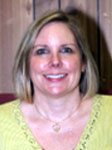
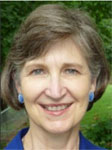 School
Visit
School
Visit

 Strategy
1: Discourse and Talk Moves
Strategy
1: Discourse and Talk Moves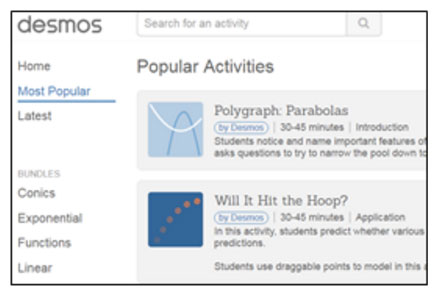 Technology
has come a long way! There are so many apps and open-resource
materials that you can access easily and without cost. My favorites
are Geogebra and Desmos. Did you know
Technology
has come a long way! There are so many apps and open-resource
materials that you can access easily and without cost. My favorites
are Geogebra and Desmos. Did you know
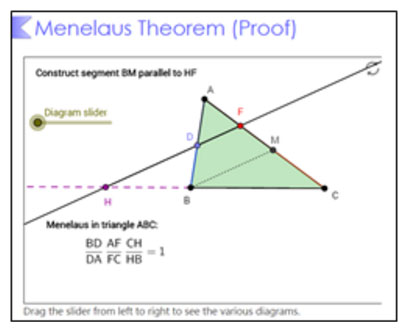



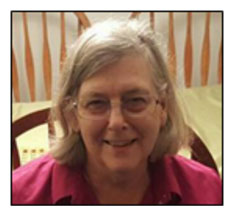 Teacher
Talk is a new section for Reflections. This section will be used to
showcase the perspectives of teachers in the informal setting of an
interview. This Teacher Talk showcases the experiences of Diana
Lossner, a retired mathematics teacher from Cobb County and a
part-time lecturer at Kennesaw State University. In this interview,
she discusses her struggles with learning how to teach mathematics
nearly four decades ago, and imparts some advice for those who
continue to teach mathematics today.
Teacher
Talk is a new section for Reflections. This section will be used to
showcase the perspectives of teachers in the informal setting of an
interview. This Teacher Talk showcases the experiences of Diana
Lossner, a retired mathematics teacher from Cobb County and a
part-time lecturer at Kennesaw State University. In this interview,
she discusses her struggles with learning how to teach mathematics
nearly four decades ago, and imparts some advice for those who
continue to teach mathematics today. 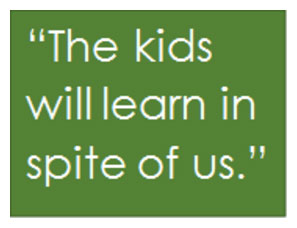 Diana:
We were given the textbook, told to start on page 1 and get as far
as you could. I had no other math teachers at my disposal. I made up
all my own worksheets and tests. The biggest challenge was that I
had to teach my low level kids to add, subtract, multiply and
divide. I had no background in that so I made up my own
manipulatives and hoped that was right. It seemed to work okay. The
math I taught was much harder than now. My 7th grades learned base 5
arithmetic. Teaching that showed me that the kids really know the
base 10 system, so I went back and showed them that. My unofficial
mentor was an English teacher. Her favorite saying was "The kids
will learn in spite of us." Our principal wanted to try different
approaches to teaching but never fully understood how to implement
any of them. I had no resources except teacher's edition of
textbook.
Diana:
We were given the textbook, told to start on page 1 and get as far
as you could. I had no other math teachers at my disposal. I made up
all my own worksheets and tests. The biggest challenge was that I
had to teach my low level kids to add, subtract, multiply and
divide. I had no background in that so I made up my own
manipulatives and hoped that was right. It seemed to work okay. The
math I taught was much harder than now. My 7th grades learned base 5
arithmetic. Teaching that showed me that the kids really know the
base 10 system, so I went back and showed them that. My unofficial
mentor was an English teacher. Her favorite saying was "The kids
will learn in spite of us." Our principal wanted to try different
approaches to teaching but never fully understood how to implement
any of them. I had no resources except teacher's edition of
textbook.  Diana:
Each change was so different that it was like starting over. But
they all had one thing in common - no resources. I started working
with my first real mentor…when I taught Physics at Baylor School for
Boys (now coed). My department head helped me tremendously. I really
had no help until I came to Cobb County in 1984. I was in a
department of fifteen at Walton High School. We worked together just
like they do today. (Walton teaches "lock step" with all teachers
teaching the same thing on the same day with the same test and a
lead teacher in charge. They formed professional learning
communities before they were called PLCs. I know a lot of schools
still have them, but it doesn't seem mandatory now.) The biggest
challenge was always a lack of material. I relied totally on the
textbook.
Diana:
Each change was so different that it was like starting over. But
they all had one thing in common - no resources. I started working
with my first real mentor…when I taught Physics at Baylor School for
Boys (now coed). My department head helped me tremendously. I really
had no help until I came to Cobb County in 1984. I was in a
department of fifteen at Walton High School. We worked together just
like they do today. (Walton teaches "lock step" with all teachers
teaching the same thing on the same day with the same test and a
lead teacher in charge. They formed professional learning
communities before they were called PLCs. I know a lot of schools
still have them, but it doesn't seem mandatory now.) The biggest
challenge was always a lack of material. I relied totally on the
textbook. Becky:
As you look back on your career, what stands out the most, and what
words of wisdom do you have to share with our readers.
Becky:
As you look back on your career, what stands out the most, and what
words of wisdom do you have to share with our readers.  Before
you know it, it will be that special time of the year when
mathematics teachers from across the state come together to learn,
discuss, and be inspired about teaching mathematics. The 2017
Georgia Mathematics Conference at Rock Eagle will be filled with
engaging sessions and insightful keynote speakers, so please save
the dates of October 18th through 20th. This year’s theme will be
“Communicating Mathematics: Creating a Culture of Discourse
Fluency.”
Before
you know it, it will be that special time of the year when
mathematics teachers from across the state come together to learn,
discuss, and be inspired about teaching mathematics. The 2017
Georgia Mathematics Conference at Rock Eagle will be filled with
engaging sessions and insightful keynote speakers, so please save
the dates of October 18th through 20th. This year’s theme will be
“Communicating Mathematics: Creating a Culture of Discourse
Fluency.”

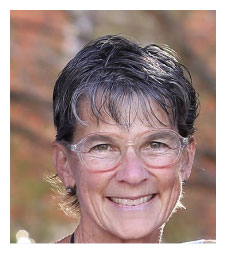


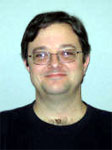

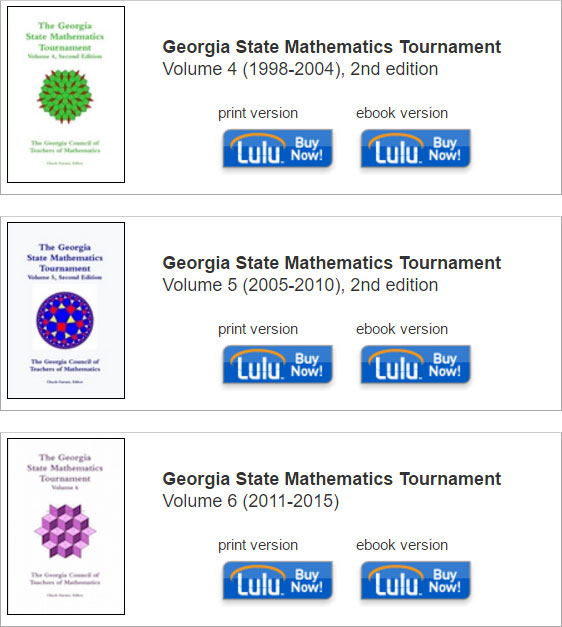
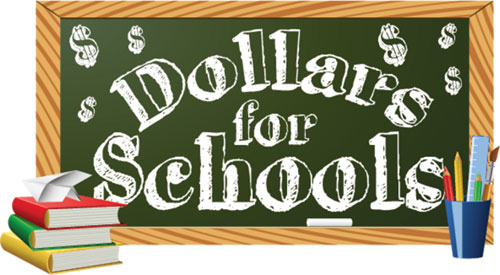
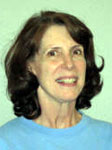

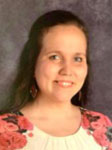 Do
you have something to share with other mathematics teachers or
mathematics teacher educators? Do you have a favorite mathematical
lesson that invites your students to dive into mathematics? Have you
discovered a new technology tool that you cannot wait to share with
your colleagues? If so, please consider submitting your manuscript
to Reflections, a publication of the Georgia Council of Teachers of
Mathematics. How do you dive deeper into problem-solving,
collaboration, mathematics, or instructional practices?
Do
you have something to share with other mathematics teachers or
mathematics teacher educators? Do you have a favorite mathematical
lesson that invites your students to dive into mathematics? Have you
discovered a new technology tool that you cannot wait to share with
your colleagues? If so, please consider submitting your manuscript
to Reflections, a publication of the Georgia Council of Teachers of
Mathematics. How do you dive deeper into problem-solving,
collaboration, mathematics, or instructional practices?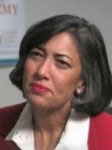
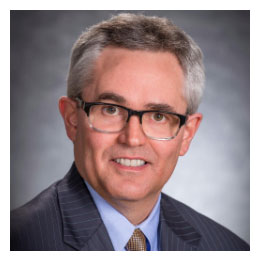 In a recent President’s blog post on the
In a recent President’s blog post on the

